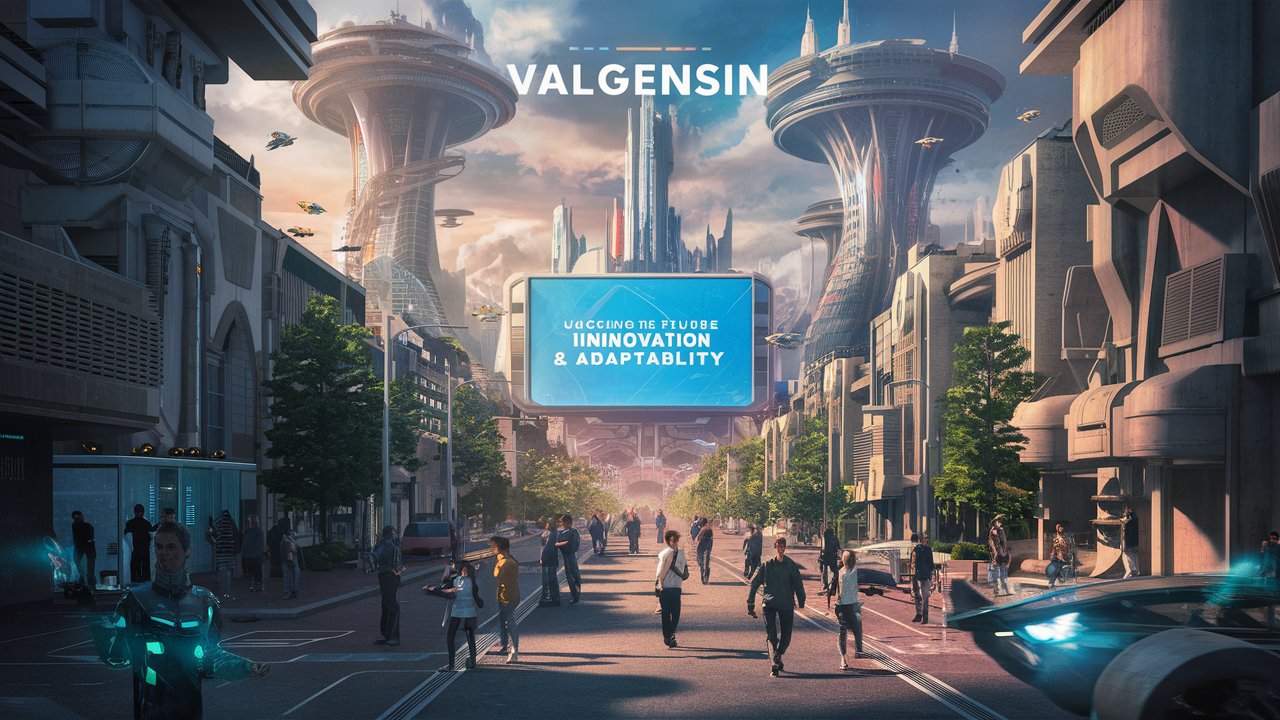Business
HSBC Share Price: Comprehensive Guide to Tracking, Understanding & Investing

In this article we deliver an in-depth and authoritative examination of the hsbc share price—covering its current levels, listing venues, valuation metrics, historic movements, major catalysts, and future outlook. Our goal is to provide investors and analysts alike with a robust resource so they can understand what drives HSBC’s stock, where it stands today, and whether it merits inclusion in a portfolio.
1. Where Does the HSBC Share Price Trade?
HSBC’s shares are listed across multiple exchanges, which means the quoted share price will vary by venue. The primary listing is on the London Stock Exchange (LSE) under the ticker HSBA, and there are also listings on the **Hong Kong Stock Exchange and the **New York Stock Exchange (NYSE) via ADRs.
For example, the latest London share price sits near £9.95 (≈ 1,005 p) in mid-2025.
In the U.S., the ADR for HSBC trades near US$64-67.
It is crucial for investors to check the correct listing (currency, exchange) when speaking of “HSBC share price” to avoid confusion.
2. Historical Performance & Valuation Context
Over recent years, HSBC has experienced significant volatility. For instance, as of the ‘year low’ on the LSE it dipped to around 682.40 p, while the year high reached 1,067.80 p in some recent cycle.
From a valuation standpoint, as of 2024 the P/E ratio was about 10.57. Dividend yield has also hovered in the mid-4-6% range, offering a comparatively attractive income element among major global banks.
This background indicates that although HSBC may not be a high-growth bank akin to some fintech disruptors, it offers steady income and value characteristics.
3. Key Drivers Affecting the HSBC Share Price
a) Macro & Banking Industry Trends
Interest rate movements, global trade dynamics, regulation and credit risk all influence HSBC’s earnings, which in turn affects the share price. For example, HSBC warned of increased impairments tied to shifting trade and global uncertainty.
b) Geographical Focus & Strategy
HSBC has a large business presence in Asia, notably Hong Kong and mainland China, giving it exposure to growth in that region but also added risk. For example, HSBC’s Asian operations were cited as crucial for unlocking new opportunities.
c) Capital Actions: Buybacks, Dividends, Restructuring
Share buy-backs are a direct way to enhance shareholder value. HSBC has recently executed significant buy-back programmes. For instance, one recent announcement noted repurchase of 88 million ordinary shares for approximately US$1.123 billion.
Such capital actions can signal management confidence and help support the share price.
d) Income Generation & Dividend Policy
Given HSBC’s status as a large global bank with a history of dividend payouts, the share price often reflects expectations about future dividend sustainability. On its investor relations page the company supplies regular updates for shareholders.
e) Regulatory & Legal Risks
Banks operate under heavy regulation and face potential litigation, which can inject future cost uncertainty. For example, HSBC’s Swiss unit faced scrutiny for its client base.
These risks may depress valuation multiples if investors become more cautious.
4. Current Share Price Snapshot & Interpretation
As of late October 2025, the London listing of HSBC (HSBA) was trading around £9.50-10.50 (≈ 950-1,050 p) based on multiple data sources.
The U.S. ADR (HSBC) is trading around US$63-67.
Taking into account the recent buy-back announcement and the bank’s restructuring efforts, the share price appears to reflect a mix of moderate growth expectations and solid dividend yield. However, the valuation is not necessarily stretched; the P/E multiple remains in the low double digits.
For investors this means: if you believe HSBC can stabilise or improve its profitability and maintain its dividend, the share price may offer upside; conversely, any negative surprises around credit or regulation could lead to downside.

5. Outlook & Forecasts for the HSBC Share Price
While no one can predict the future with certainty, a few reasonable scenarios emerge for the HSBC share price:
-
Base case: HSBC continues to execute cost-savings, maintains dividend payout, Asia remains a growth engine. The share price may drift upward modestly (e.g., 5-15%) over the next 12-18 months.
-
Optimistic case: Strong Asian growth, successful restructuring, and higher interest margins drive earnings, leading to a share price upside of 20% or more.
-
Pessimistic case: Global economic slowdown, large impairment charges, regulatory headwinds cause earnings to shrink and the share price suffers a re-rating (e.g., down 10-20%).
Listing these as forecasts helps frame potential outcomes rather than promises. Analysts often emphasise that banks like HSBC hinge on macro factors beyond their control.
6. How Investors Should Approach the HSBC Share Price
a) Check the correct listing and currency
Because HSBC trades on multiple exchanges (London, Hong Kong, New York), when you reference “HSBC share price”, ensure you’re viewing the correct ticker for your region or platform.
b) Consider dividend yield and sustainability
If your investment objective is income, HSBC’s dividend yield is attractive; however, you must assess how well earnings support that dividend in current conditions.
c) Evaluate risk-reward based on valuation
With the P/E ratio modest and large global bank status offering a degree of stability, HSBC may fit for conservative allocations—but only if you believe its strategic pivot succeeds and no major macro-shock happens.
d) Monitor news, buy-backs and disclosures
Management actions such as share buy-backs or major restructuring moves are important signals. For example, recent buy-backs indicate capital being returned to shareholders.
Regularly review the company’s investor relations announcements.
e) Keep an eye on macro-economic context
Because HSBC is a global banking heavyweight, things like interest rate changes, trade tensions, credit losses, regulatory changes and global growth trends will have outsized impact on its share price.
Conclusion
The “HSBC share price” is influenced by a rich combination of global banking dynamics, regional strategy (particularly in Asia), capital management actions, dividend policy and macroeconomic trends. While the current share price appears to reflect a measured expectation of moderate growth and steady income, investors must balance the potential rewards (dividend yield, value characteristics) against the risks (credit stress, regulatory headwinds, economic volatility). For those looking for a globally-oriented bank with income potential and solid asset base, HSBC may present a compelling case—provided one is comfortable with the inherent banking sector risks.
Frequently Asked Questions (FAQ)
Q1: What ticker symbol should I use when tracking HSBC share price?
A1: On the London Stock Exchange the ticker is HSBA. On the New York Stock Exchange the ADR trades under HSBC. On the Hong Kong Stock Exchange the listing code differs again.
Q2: What is the current dividend yield for HSBC shares?
A2: Recent figures suggest the dividend yield is in the 4-6% range, making it relatively attractive among large banks.
Q3: What valuation multiple is HSBC trading on?
A3: On the London listing HSBC’s P/E ratio is reported around 10.5 in recent reporting.
Q4: Does HSBC pay dividends regularly?
A4: Yes—HSBC has a history of paying dividends and provides disclosure via investor relations on shareholder and dividend information.
Q5: What are the main risks to the HSBC share price?
A5: Key risks include global economic slowdown, increased credit losses in banking operations, regulatory and legal issues, exposure to Asia/China region, and unexpected capital-emission events or restructuring burdens.
Q6: Is HSBC a good investment right now based on its share price?
A6: That depends on your investment goals. If you seek a value-oriented, global bank with decent income and you believe its strategic pivot (especially in Asia) will bear fruit, then HSBC could be worthy of consideration. If you prioritise high growth or minimal exposure to banking risk, you might look elsewhere.
Business
How Potnovzascut Works – The Complete Guide to Understanding Its Functionality and Benefits

In the evolving world of innovation and digital advancement, Potnovzascut has emerged as one of the most discussed technologies that promises to transform the way systems operate. Understanding how Potnovzascut works is essential for anyone looking to leverage its capabilities for business, research, or development purposes. This comprehensive guide explores every aspect of Potnovzascut — its mechanism, features, advantages, and practical applications — to provide you with the ultimate insight into its operational efficiency and performance.
What Is Potnovzascut?
Potnovzascut is an advanced technological framework designed to enhance process optimization, data protection, and operational scalability. It integrates modern computing models with automated workflows to deliver faster, safer, and more efficient results. Whether used in industrial automation, data systems, or software infrastructure, Potnovzascut acts as a bridge between intelligence and execution, improving both performance and accuracy.
This innovative system leverages machine learning, predictive algorithms, and secure processing protocols to streamline operations and ensure reliability. In essence, Potnovzascut is not just a single tool but a comprehensive ecosystem that harmonizes data, security, and performance into one coherent structure.
How Potnovzascut Works
At its core, Potnovzascut operates on a multi-layered processing model that allows it to handle diverse tasks simultaneously. Its functionality can be broken down into several crucial stages:
1. Data Input and Analysis
Potnovzascut begins by collecting large volumes of structured and unstructured data from multiple sources. The system then employs data filtering and preprocessing techniques to ensure that only relevant and accurate information proceeds to the next stage. This preprocessing is vital for maintaining the precision and reliability of outcomes.
2. Intelligent Processing
Once data is prepared, Potnovzascut applies advanced computation algorithms to interpret and analyze the information. Using neural learning techniques, it identifies patterns, relationships, and potential optimizations within datasets. This enables Potnovzascut to adapt dynamically, improving with every iteration and continually refining its performance over time.
3. Automated Execution
After analysis, Potnovzascut triggers automated actions based on predefined parameters or adaptive learning. This execution layer ensures tasks are completed efficiently with minimal human intervention. Through automation, Potnovzascut minimizes errors and accelerates overall process timelines, making it a game-changer in modern digital ecosystems.
4. Continuous Feedback and Optimization
One of the most impressive features of Potnovzascut is its ability to learn from feedback loops. It constantly monitors output performance, gathers feedback, and adjusts its internal parameters to enhance future outcomes. This self-optimization mechanism ensures sustained efficiency and adaptability to new challenges or environmental shifts.
Key Features of Potnovzascut
To fully grasp how Potnovzascut works, it’s essential to understand its standout features that distinguish it from traditional systems:
-
Adaptive Intelligence: Potnovzascut’s built-in learning system enables it to continuously evolve and improve based on real-world data and feedback.
-
High Scalability: Designed to handle everything from small-scale applications to enterprise-grade operations, it seamlessly adjusts to workload variations.
-
Enhanced Security: With end-to-end encryption and multi-factor authentication, Potnovzascut ensures that all data remains secure during processing and transmission.
-
Automation Capabilities: Reduces manual workload by automating repetitive tasks, improving efficiency, and reducing human error.
-
User-Friendly Interface: Offers intuitive dashboards and customizable controls, allowing users to monitor and adjust operations effortlessly.

Benefits of Using Potnovzascut
Implementing Potnovzascut delivers a multitude of tangible benefits for businesses, developers, and organizations alike:
1. Improved Efficiency
Through intelligent automation and real-time optimization, Potnovzascut enhances workflow speed and accuracy. Businesses using Potnovzascut often experience significant reductions in operational time and costs.
2. Robust Data Security
With advanced encryption and threat detection systems, Potnovzascut ensures that all sensitive information remains protected. Its security-first architecture makes it ideal for industries that handle confidential or regulated data.
3. Cost-Effective Operations
By automating processes and reducing manual dependency, Potnovzascut lowers overhead expenses, enabling businesses to achieve more with fewer resources. This directly translates into greater profit margins and sustainable growth.
4. Real-Time Insights
Potnovzascut provides comprehensive analytics and data visualization features, helping organizations make data-driven decisions faster and with greater confidence.
5. Seamless Integration
It supports integration with existing systems, platforms, and APIs, making adoption smooth without disrupting ongoing workflows. Whether in manufacturing, finance, healthcare, or IT, Potnovzascut adapts to various industries with ease.
Applications of Potnovzascut Across Industries
The versatility of Potnovzascut allows it to thrive in numerous environments:
-
Manufacturing: Used for predictive maintenance, automation of production lines, and real-time quality control.
-
Finance: Supports fraud detection, transaction monitoring, and risk management.
-
Healthcare: Enables intelligent diagnostics, patient data management, and operational automation.
-
Information Technology: Improves network monitoring, cybersecurity measures, and process optimization.
-
Retail and E-commerce: Enhances inventory control, customer behavior analytics, and personalized marketing strategies.
Potnovzascut’s cross-industry adaptability is one of its most powerful attributes, making it a universal tool for innovation-driven enterprises.
Why Potnovzascut Stands Out
Unlike traditional systems that rely heavily on static models, Potnovzascut’s dynamic learning approach ensures that it constantly adapts to new data and operational demands. It is not limited to predefined scenarios — instead, it grows smarter over time, making it more efficient and capable of handling complex, evolving challenges.
Furthermore, its modular design allows customization to fit the unique requirements of every business. From small startups to large corporations, Potnovzascut delivers scalable, secure, and intelligent solutions that redefine productivity and performance.
Future of Potnovzascut Technology
As the digital landscape continues to evolve, Potnovzascut is expected to play a pivotal role in the next generation of intelligent systems. With ongoing advancements in AI, machine learning, and cybersecurity, the framework will continue to expand its capabilities — paving the way for smarter, faster, and safer automation across industries.
Organizations that adopt Potnovzascut early will benefit from its continuous evolution and its ability to adapt to emerging technologies. The potential for future integration with IoT, blockchain, and quantum computing further amplifies its importance as a foundational technology for innovation.
Conclusion
In conclusion, Potnovzascut represents a revolutionary step forward in automation, intelligence, and data security. Its multi-layered functionality, adaptive learning, and robust architecture make it an essential tool for any business seeking to thrive in the digital era. By understanding how Potnovzascut works, we can harness its full potential to achieve unparalleled efficiency, safety, and scalability in every operational domain.
Frequently Asked Questions (FAQ)
1. What makes Potnovzascut different from other automation tools?
Potnovzascut’s adaptive intelligence and self-learning mechanism make it superior to conventional systems that rely on static programming models.
2. Is Potnovzascut suitable for small businesses?
Yes, Potnovzascut is highly scalable and customizable, making it ideal for both small enterprises and large organizations.
3. Can Potnovzascut integrate with existing IT systems?
Absolutely. Potnovzascut supports seamless integration with current infrastructure, ensuring smooth transitions without disrupting workflows.
4. How secure is Potnovzascut?
It employs end-to-end encryption, continuous threat detection, and advanced access control to provide maximum security for data and operations.
5. What industries benefit most from Potnovzascut?
Industries such as healthcare, finance, manufacturing, and IT benefit significantly from its automation, analytics, and security capabilities.
Business
Valgensin: Unlocking the Future of Innovation & Adaptability

In an era defined by rapid change, relentless innovation, and shifting paradigms, the term “Valgensin” emerges as a powerful symbol. It embodies progress, flexibility, and the ability to thrive in unpredictable environments. In this comprehensive article, we at [our organisation] will explore several compelling titles, elaborate on what “Valgensin” stands for, examine real-world applications, and provide detailed insights that will position this article favourably in search results for anyone seeking to understand the concept of Valgensin in its many forms.
Potential Titles & Keyword Explanation
Here are some title ideas — each with emphasis on keywords and why they matter:
-
“Valgensin: The New Frontier of Adaptive Innovation”
-
Keywords: Valgensin, adaptive innovation
-
This title highlights how Valgensin is not just a word, but a frontier concept in adaptation and innovation.
-
-
“Understanding Valgensin: How It Shapes Modern Business Strategy”
-
Keywords: Understanding Valgensin, modern business strategy
-
Aimed at professionals wanting to apply the concept to business.
-
-
“Valgensin in Technology and Culture – A Detailed Exploration”
-
Keywords: Valgensin, technology, culture
-
Illustrates how Valgensin spans beyond one industry into broader cultural realms.
-
-
“Why Valgensin Matters: Adaptability, Resilience and Growth”
-
Keywords: Valgensin matters, adaptability, resilience, growth
-
Emphasizes the why: what’s at stake and why readers should care.
-
-
“Implementing Valgensin: Practical Steps for Organisations”
-
Keywords: Implementing Valgensin, practical steps, organisations
-
A more how-to oriented title to attract decision-makers and implementers.
-
Each of these titles emphasises the primary keyword “Valgensin” plus supporting keywords that broaden search relevance.
What is Valgensin?
At its core, Valgensin refers to a versatile concept that stands for innovation, adaptability, resilience, and forward-thinking strategy. While it lacks a long-established definition in mainstream literature, multiple sources indicate that Valgensin is used in contexts of branding, technology, creativity, and culture.
In essence:
-
The “Val-” prefix evokes value, strength, or validity.
-
The “-gen” part suggests generation, creation, or generation of new ideas.
-
The “-sin” or “-sen” suffix adds a modern, tech-inflected or brand-inflected sense.
Therefore, Valgensin can be seen as a brandable term that companies, communities or individuals adopt to signal their alignment with future-oriented values.
Valgensin in Business Strategy
In the world of enterprise strategy, Valgensin is increasingly referenced as a guiding model. Organisations seeking to excel in competitive, fast-moving markets adopt the Valgensin mindset: embrace change, innovate continuously, pivot when needed, and foster a culture of resilience.
Specifically:
-
Companies might use Valgensin as a brand philosophy, indicating that their business is built on innovation, agility, and responsiveness.
-
Strategic frameworks may incorporate Valgensin by emphasising adaptive business models, modular operations, and rapid iteration cycles.
-
Leadership narratives can align with Valgensin by championing experimentation, cross-functional collaboration, and ongoing learning.
By doing so, organisations not only position themselves for internal transformation but also signal to stakeholders — clients, partners, investors — that they are aligned with tomorrow’s dynamics.
Valgensin and Technology Applications
Within technology, Valgensin serves as a useful shorthand for systems that are flexible, self-evolving, and built for change. For example, sources describe it as representing “AI-driven systems that enhance decision-making and performance”, or “cloud-based frameworks offering scalability and adaptability”.
Key technology-driven aspects of Valgensin:
-
AI and Machine Learning: Tools that adapt over time, learn from data, and adjust their behaviour — embodying the Valgensin principle of continuous evolution.
-
Cloud/Nomadic architectures: Systems designed for fluid scale, distributed operations, and dynamic resource allocation reflect the adaptability part of Valgensin.
-
Platform Ecosystems: Rather than monolithic systems, Valgensin-based approaches favour modular, interoperable, plug-and-play components — enabling organisations to mix, match and pivot quickly.
-
User-Centric Innovation: Technology that is shaped by feedback loops, agile development, and shifting user expectations — consistent with the Valgensin mindset of embracing change.
These applications underline that Valgensin is not just theoretical; it has tangible manifestations in the digital-technology realm.
Valgensin in Creative & Cultural Contexts
Valgensin is also heavily used in creative, cultural and social-media contexts. As one article notes, it is “a coinage… intentionally flexible — designed to conform with the ambitions of creators, brands and industries.”
In cultural application:
-
Creative collectives might adopt Valgensin as a brand identity — indicating they are on the edge of new ideas, breaking barriers, and blending disciplines (e.g., design + tech + storytelling).
-
Social communities and gamers may embrace the term to signal they represent more than simply participation—they are leaders, builders, or trend-setters in the digital space.
-
Pop-culture use: The term fits well as a gamer-tag, a social-media identity or a brand name because it sounds futuristic, memorable and distinctive.
Thus Valgensin resonates not only in business or tech but also in the broader culture of creation, identity and community.

Why Valgensin Matters Today
We live in a world that demands constant adaptation. Technological shifts, global market changes, social disruptions and cultural transformations require organisations and individuals to be nimble, observant and resilient. Valgensin encapsulates that requirement.
It matters because:
-
Speed of Change: The rate at which industries evolve means static strategies are obsolete; Valgensin emphasises agility.
-
Complexity of Systems: As systems become interconnected and multi-layered, the ability to pivot, reconfigure or redeploy becomes crucial — a Valgensin quality.
-
Need for Innovation: In saturated markets, simply executing is no longer enough — Valgensin implies proactive generation of new value.
-
Cultural Expectation: Audiences expect brands, creators and communities to be dynamic and relevant — Valgensin serves as a signal of that relevance.
In short, adopting a Valgensin attitude enables alignment with future-ready thinking.
How to Implement Valgensin in Practice
Understanding Valgensin is one thing — implementing it is another. Here are actionable steps we recommend:
-
Articulate your Valgensin Vision
Define what “Valgensin” means for your context. Is it about innovation, adaptability, culture shift, or digital transformation? Clarify the narrative. -
Build Modular Systems & Processes
Design operations, tech architectures and workflows that allow for rapid change. Use modular tools, plug-ins, APIs and agile frameworks — reflecting the Valgensin principle of adaptability. -
Foster an Adaptive Culture
Encourage teams to experiment, fail fast, iterate, and learn continuously. Reward behaviours aligned with agility and innovation rather than rigid hierarchy. -
Monitor & Adjust
Use data and feedback loops to understand what’s working. Pivot when necessary — the Valgensin mindset embraces course-correction. -
Communicate the Change
You must convey to stakeholders that you’re aligned with a Valgensin approach. Whether it’s customers, employees or partners, clarity of vision matters. -
Measure New Metrics
Traditional KPIs may not capture innovation and adaptability effectively. Consider metrics like time-to-pivot, number of experiments, stakeholder engagement in innovation processes. -
Scale Purposefully
Avoid moving fast without reflection. True Valgensin implementation balances speed with intentional strategy.
By following these steps, you can operationalise the concept of Valgensin rather than leaving it as a buzzword.
Common Misconceptions About Valgensin
-
Myth: Valgensin means chaos.
Reality: While Valgensin emphasises flexibility and change, it is not about disorder. It requires structure in terms of vision, governance and clarity of purpose. -
Myth: Valgensin is only for tech companies.
Reality: While tech is a common domain, Valgensin applies equally to creative agencies, non-profits, cultural movements or any organisation seeking innovation. -
Myth: Valgensin replaces strategy.
Reality: Valgensin complements strategy. It ensures that strategy remains dynamic, not rigid. -
Myth: Valgensin is a flavour‐of‐the‐month term.
Reality: Because it is grounded in key principles—adaptability, innovation, resilience—it has the potential for long-term relevance.
Understanding and dispelling these misconceptions ensures you approach Valgensin with clarity and purpose.
Conclusion
In conclusion, Valgensin is far more than a coined term—it is a strategic mindset, a cultural identity, and an operational philosophy. By embracing the concept of Valgensin, organisations, creators and communities position themselves to navigate change, innovate boldly, and stay resilient in the face of uncertainty.
If you commit to articulating your Valgensin vision, building modular systems, fostering adaptive culture, monitoring progress and scaling wisely, you will not only ride the waves of transformation—you will help shape them.
FAQ
Q1: What exactly is Valgensin?
A1: Valgensin is a term that encapsulates the ideas of adaptability, innovation, strength and forward-thinking. It’s used as a brand, strategy and culture-setting device in different domains.
Q2: Why should my organisation care about Valgensin?
A2: Because in today’s fast-moving environment, organisations must adapt quickly, innovate continuously and remain resilient. Valgensin provides a framework for doing so.
Q3: Can Valgensin be used in non-tech industries?
A3: Absolutely. Although it has strong resonance in tech, Valgensin applies to any context where innovation, adaptability and culture change matter—such as marketing, media, social enterprises or creative studios.
Q4: How do I start implementing Valgensin?
A4: Start by defining what Valgensin means for you, build modular systems, encourage adaptive culture, use feedback and data, communicate clearly, and measure the right metrics.
Q5: Are there risks in adopting Valgensin?
A5: The major risk is mis-interpreting it as a licence to be chaotic. Without clear vision, governance or alignment, attempts at flexibility can lead to fragmentation. The key is to balance flexibility with strategic clarity.
Business
Simpcitt – The Future of Digital Simplicity and Smart Living

In today’s fast-paced digital era, Simpcitt has emerged as a transformative concept symbolizing simplicity, innovation, and smart integration of technology in everyday life. It represents the seamless blend of smart cities, artificial intelligence, and connected ecosystems, offering citizens an effortless experience in managing work, living, and community interactions. As the world transitions toward digital-first societies, the idea of Simpcitt redefines how technology should serve humanity—efficiently, intuitively, and sustainably.
What is Simpcitt? A Deep Dive into the Concept
The term Simpcitt combines “Simple” and “City,” emphasizing an intelligent urban ecosystem that simplifies complex infrastructures. A Simpcitt leverages IoT (Internet of Things), AI-driven analytics, cloud computing, and sustainable architecture to create cities that are both smart and human-centric. Every aspect of such a city—from transportation to healthcare, governance to environmental monitoring—is powered by integrated digital solutions designed for ease and efficiency.
In a Simpcitt environment, citizens benefit from real-time data, automated systems, and personalized services. Traffic congestion is reduced through smart routing, energy consumption is optimized with AI-driven grids, and public safety is enhanced with predictive surveillance—all contributing to a more livable, productive, and sustainable urban experience.
The Core Pillars of Simpcitt
1. Smart Infrastructure
The backbone of every Simpcitt lies in its intelligent infrastructure. This includes advanced energy grids, autonomous public transport, and sensor-based waste management systems. These interconnected systems share data through a unified digital platform, ensuring optimized performance and reduced operational costs. For instance, smart lighting systems adjust brightness based on human activity, conserving energy and minimizing environmental impact.
2. Data-Driven Governance
A true Simpcitt operates on transparent, data-driven governance. Decision-making becomes faster and more effective when real-time data is utilized to monitor public needs. Governments can analyze citizen feedback, track infrastructure health, and deploy resources precisely where they are needed. This leads to improved public services, greater accountability, and enhanced civic engagement.
3. Sustainable Urban Development
Environmental sustainability is at the heart of the Simpcitt philosophy. These cities prioritize renewable energy sources, green architecture, and eco-friendly transportation. By leveraging solar power, electric vehicles, and vertical gardens, Simpcitt aims to reduce carbon footprints while promoting cleaner, greener communities. This sustainability-driven approach ensures that technology growth aligns with environmental preservation.
4. AI-Powered Public Services
Artificial Intelligence plays a vital role in the functioning of Simpcitt. Through machine learning algorithms, predictive analytics, and natural language processing, city administrations can forecast problems before they occur. Whether it’s predicting traffic patterns, monitoring pollution levels, or personalizing healthcare services, AI ensures that citizens enjoy a proactive, rather than reactive, service experience.
5. Citizen-Centric Experience
At its core, Simpcitt is about people. It’s designed to improve the quality of life for every resident by integrating smart communication systems, digital identity management, and easy access to public resources. Through mobile applications and cloud platforms, citizens can handle everything—from paying bills to accessing emergency services—without bureaucratic delays or manual processes.
The Role of IoT in Building a Simpcitt
The Internet of Things (IoT) serves as the digital nervous system of Simpcitt. IoT devices connect homes, vehicles, offices, and public facilities, enabling them to communicate and share insights. Imagine a city where streetlights report faults automatically, water systems self-regulate leaks, and buildings adjust temperature intelligently—that’s the reality IoT brings to a Simpcitt. With millions of sensors and connected devices, IoT ensures efficiency, security, and comfort across every layer of urban life.
How Artificial Intelligence Transforms Simpcitt
AI transforms raw data into actionable intelligence. In a Simpcitt, this means smarter decisions at every level—from municipal planning to citizen welfare. AI-driven platforms can predict infrastructure failures, recommend efficient energy distribution, and even detect potential public safety threats in real time. Moreover, AI chatbots and digital assistants make government communication more accessible, reducing queues, paperwork, and wait times.
Simpcitt and the Future of Work
The Simpcitt model also redefines professional environments. With the rise of remote work, co-working spaces, and digital collaboration tools, cities must adapt to new ways of working. Simpcitt facilitates this shift through high-speed connectivity, smart office spaces, and seamless integration between digital and physical environments. This allows businesses to operate efficiently while maintaining flexibility and creativity among employees.

Economic Benefits of Developing a Simpcitt
Implementing Simpcitt initiatives drives economic growth and investment opportunities. By fostering innovation and technological adoption, such cities attract startups, global corporations, and research institutions. Furthermore, operational efficiency reduces costs for public administrations and citizens alike. This creates a sustainable economic ecosystem that benefits all stakeholders, encouraging continuous development and prosperity.
Challenges and Solutions in Building a Simpcitt
Building a Simpcitt is not without challenges. Cybersecurity, data privacy, financial investment, and infrastructure compatibility remain key concerns. However, with strong governance, robust encryption systems, and strategic partnerships between public and private sectors, these challenges can be effectively mitigated. Adopting blockchain technology can further enhance transparency and data integrity across systems.
Why Simpcitt Represents the Future of Urban Living
The Simpcitt vision is not a distant dream—it’s a blueprint for the future. As cities grow and populations expand, traditional infrastructures will struggle to meet demands. Simpcitt offers a scalable, adaptive solution that transforms cities into self-sustaining, intelligent ecosystems. Through innovation, collaboration, and ethical technology deployment, humanity can achieve a balance between progress and sustainability.
Conclusion
Simpcitt is more than a technological advancement—it’s a philosophy of living smarter, greener, and better connected. It bridges the gap between innovation and humanity, ensuring that progress enhances, rather than complicates, our daily lives. As we continue to integrate artificial intelligence, IoT, and sustainable practices, Simpcitt stands as a beacon of hope for a future where technology serves people, not the other way around.
FAQs About Simpcitt
1. What makes Simpcitt different from traditional smart cities?
Simpcitt emphasizes simplicity and user-centric integration, ensuring that technology remains accessible and meaningful for all citizens.
2. How does Simpcitt improve sustainability?
Through renewable energy, AI-based energy management, and eco-friendly infrastructure, Simpcitt minimizes waste and promotes environmental harmony.
3. Is AI essential for Simpcitt development?
Yes. AI enables predictive analytics, real-time decision-making, and automation, which are vital for efficient city management.
4. Can existing cities transform into Simpcitt models?
Absolutely. With strategic planning and technological upgrades, any modern city can evolve into a Simpcitt over time.
5. What are the key benefits for citizens living in a Simpcitt?
Enhanced quality of life, reduced operational costs, improved safety, and better access to digital public services.
-

 Entertainment2 months ago
Entertainment2 months agoHitaar – Meaning, Significance, and Complete Guide
-

 Technology2 months ago
Technology2 months agoThe Ultimate Guide to Trucofax: Features, Benefits, and How It Works
-

 Business2 months ago
Business2 months agoهنتاوي.com – The Complete Guide to Understanding, Accessing, and Exploring Online Content Safely
-

 Trends2 months ago
Trends2 months ago“Coomer SU: Understanding the Phenomenon and Its Impact”
-

 Science2 months ago
Science2 months agoUnderstanding HCOOH + CH₂ → H₂O: A Complete Guide
-

 Business2 months ago
Business2 months agoTroozer com – Everything You Need to Know About the Platform
-

 Technology2 months ago
Technology2 months ago“How to Redeem Robux on iRobux.com – Step-by-Step Guide (2024)”
-

 Technology2 months ago
Technology2 months agoHMS Photovoltaik: The Future of Solar Energy Efficiency & Innovation
